An Evolving Atmosphere
Part of Hall of Planet Earth.
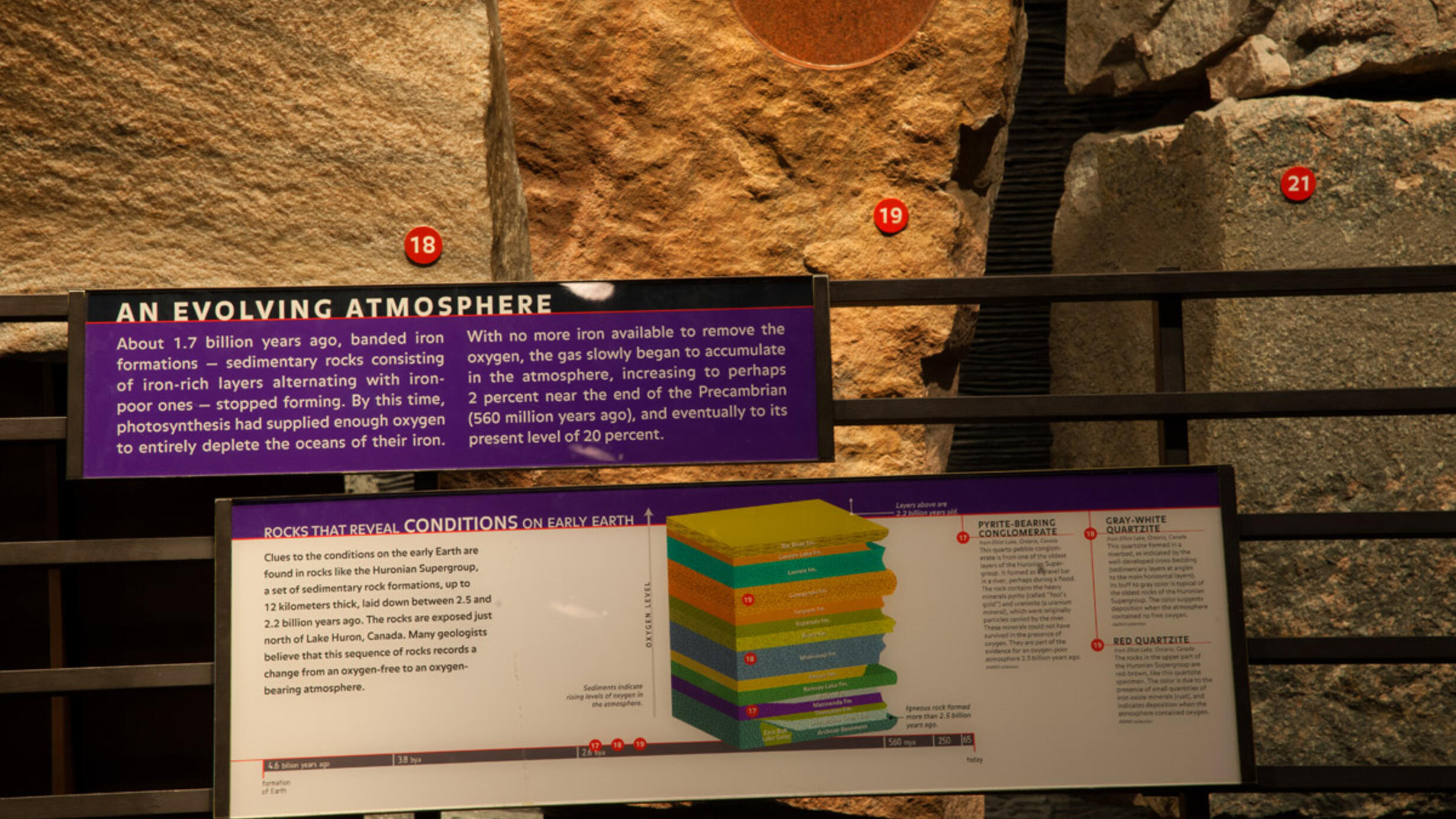 AMNH/R.Mickens
AMNH/R.Mickens About 1.7 billion years ago, banded iron formations — sedimentary rocks consisting of iron-rich layers alternating with iron-poor ones — stopped forming. By this time, photosynthesis had supplied enough oxygen to entirely deplete the oceans of their iron. With no more iron available to remove the oxygen, the gas slowly began to accumulate in the atmosphere, increasing to perhaps 2 percent near the end of the Precambrian (560 million years ago), and eventually to its present level of 20 percent.
Rocks Reveal Conditions of Early Earth
Clues to the conditions on the early Earth are found in rocks like the Huronian Supergroup, a set of sedimentary rock formations, up to 12 kilometers thick, laid down between 2.5 and 2.2 billion years ago. The rocks are exposed just north of Lake Huron, Canada. Many geologists believe that this sequence of rocks records a change from an oxygen-free to an oxygen-bearing atmosphere.
AMNH/R.Mickens
AMNH/R.Mickens
AMNH/R.Mickens
AMNH/R.Mickens
AMNH/R.Mickens
AMNH/R.Mickens
In This Section
Rocks That Reveal Conditions of Early Earth
Clues to the conditions on the early Earth are found in rocks like the Huronian Supergroup, a set of sedimentary rock formations, up to 12 kilometers thick, laid down between 2.5 and 2.2 billion years ago. The rocks are exposed just north of Lake Huron, Canada. Many geologists believe that this sequence of rocks records a change from an oxygen-free to an oxygen-bearing atmosphere.
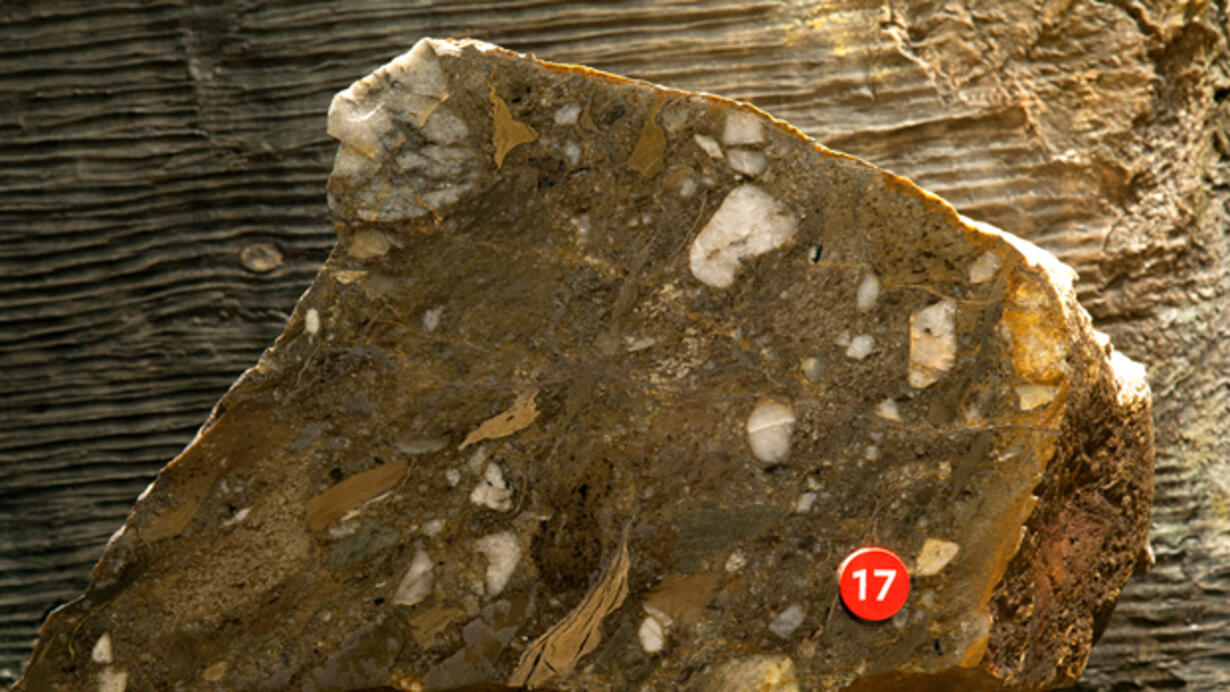
Pyrite-Bearing Conglomerate
This quartz-pebble conglomerate is from one of the oldest layers of the Huronian Super-group. It formed as a gravel bar in a river, perhaps during a flood. The rock contains the heavy minerals pyrite (called “fool’s gold”) and uraninite (a uranium mineral), which were originally particles carried by the river. These minerals could not have survived in the presence of oxygen. They are part of the evidence for an oxygen-poor atmosphere 2.5 billion years ago.
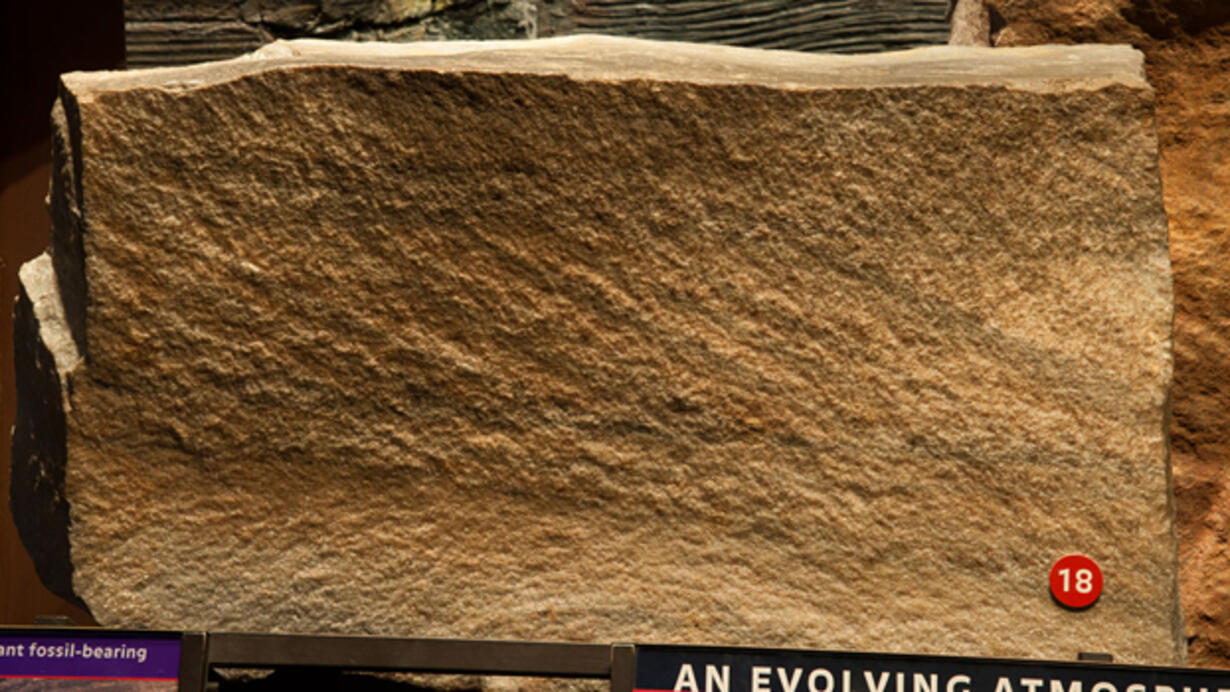
Gray-White Quartzite
This quartzite formed in a riverbed, as indicated by the well-developed cross-bedding (sedimentary layers at angles to the main horizontal layers). Its buff to gray color is typical of the oldest rocks of the Huronian Supergroup. The color suggests deposition when the atmosphere contained no free oxygen.
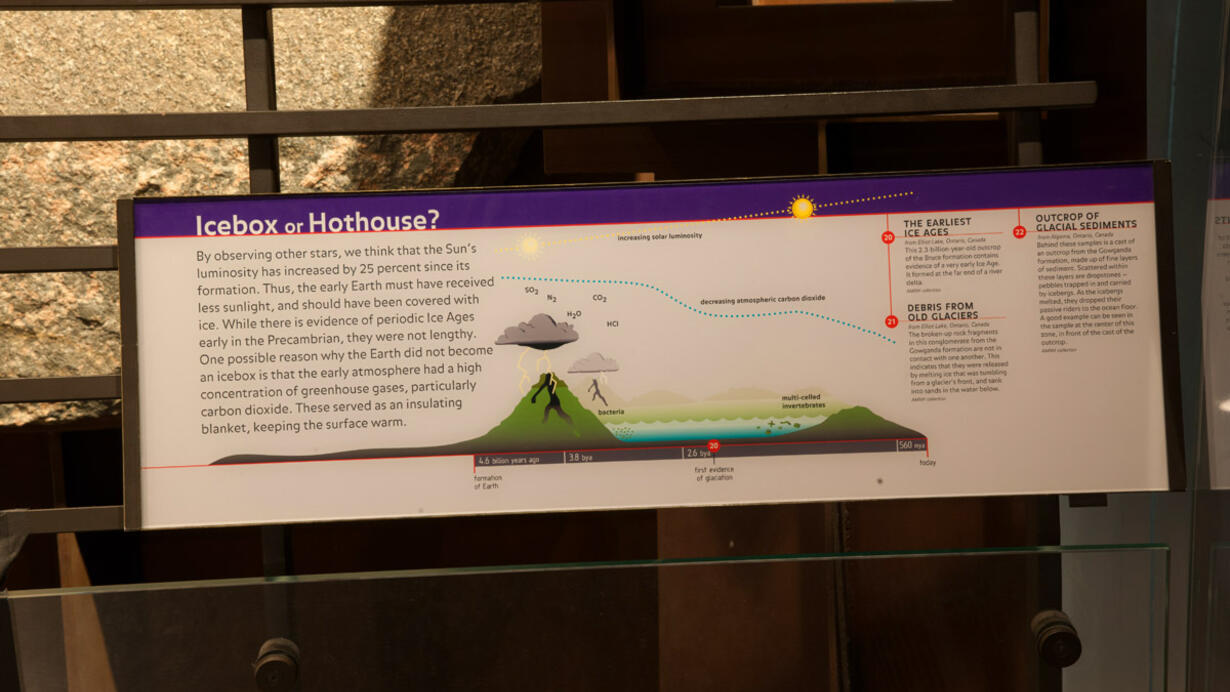 AMNH/R.Mickens
AMNH/R.Mickens Icebox or Hothouse?
By observing other stars, we think that the Sun’s luminosity has increased by 25 percent since its formation. Thus, the early Earth must have received less sunlight, and should have been covered with ice. While there is evidence of periodic Ice Ages early in the Precambrian, they were not lengthy. One possible reason why the Earth did not become an icebox is that the early atmosphere had a high concentration of greenhouse gases, particularly carbon dioxide. These served as an insulating blanket, keeping the surface warm.
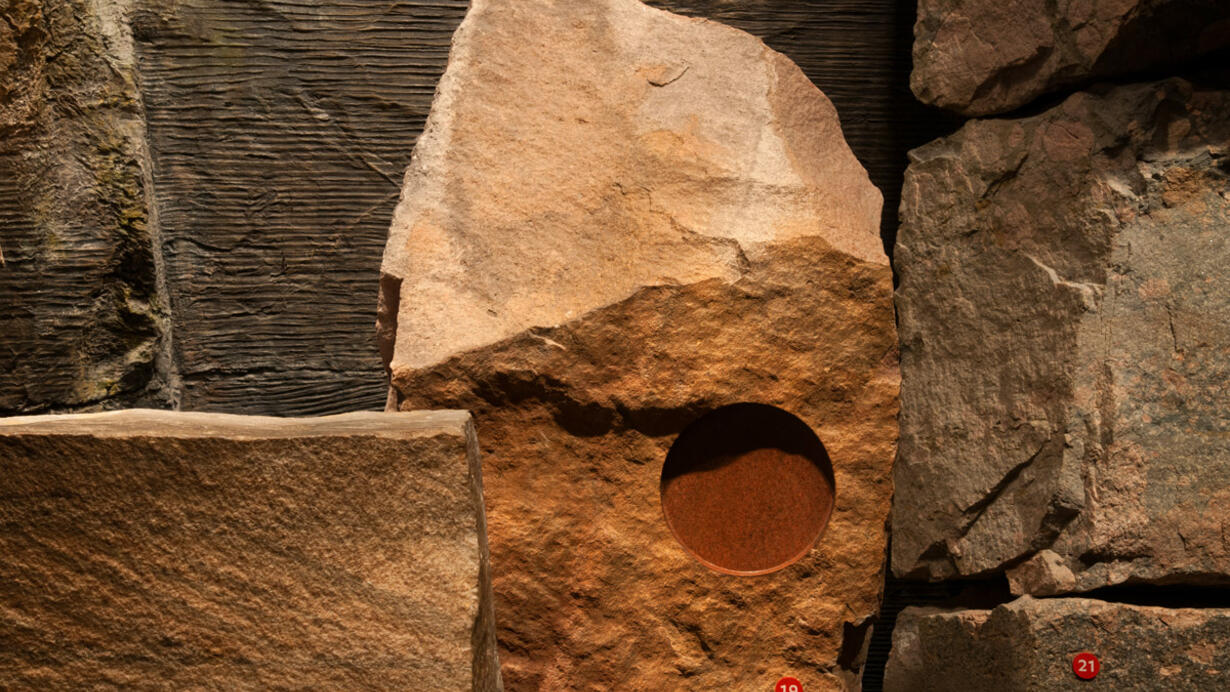 AMNH/R.Mickens
AMNH/R.Mickens Red Quartzite
The rocks in the upper part of the Huronian Supergroup are red-brown, like this quartzite specimen. The color is due to the presence of small quantities of iron oxide minerals (rust), and indicates deposition when the atmosphere contained oxygen.